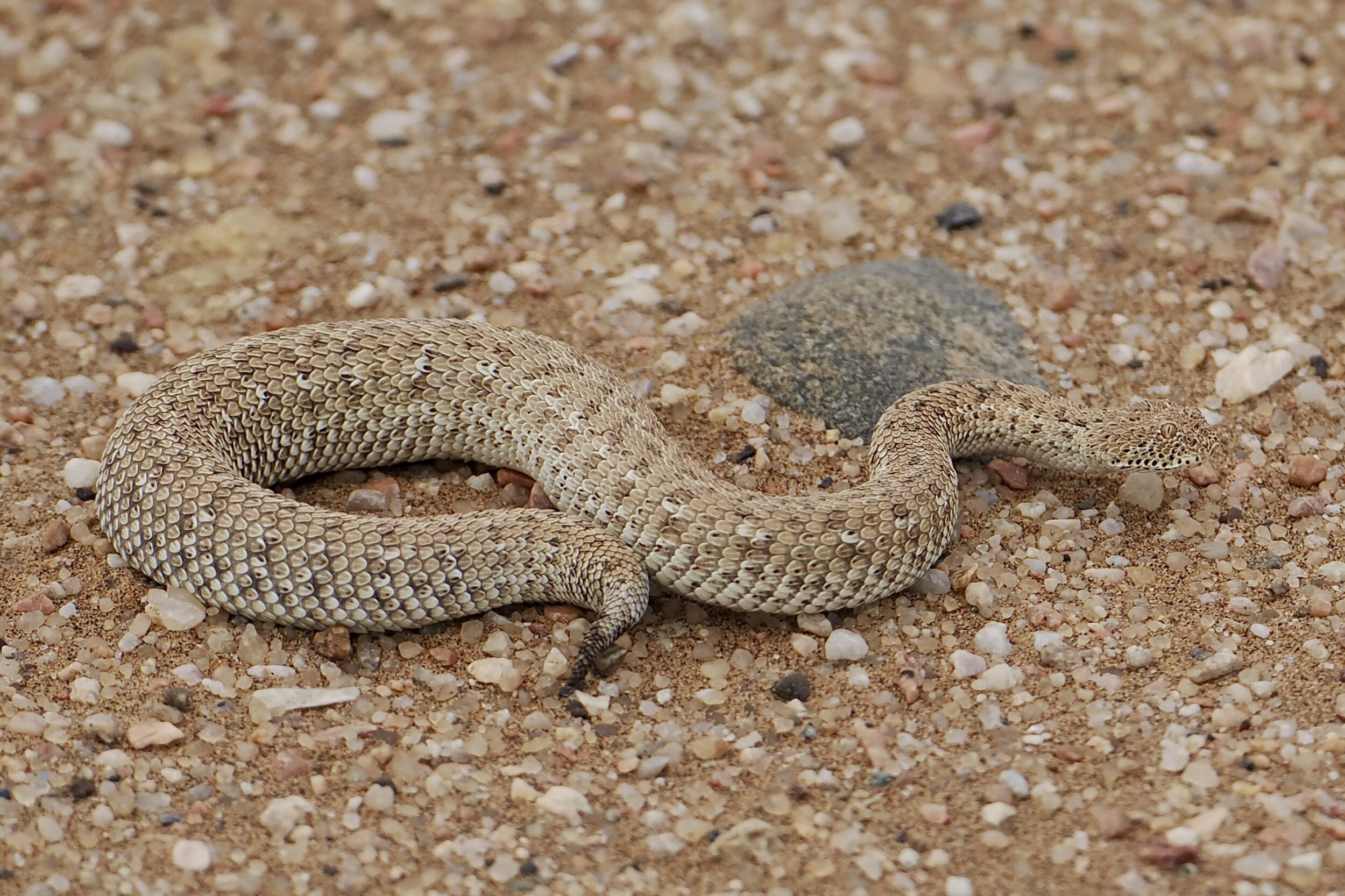This post stars the very same species – and, I think, the same individual – as did the featured image in this series’ immediately-preceding chapter.
I took this post’s photo at 3.56 pm on 19 November 2022.
Q: why was this usually-stealthy snake out in the open, on a relatively rare patch of rockier/more gravelly ground?
A: in order to warm up, before heading back to nearby (cooler) sand.
(above answer is hunch, not “gospel” truth)
Shortly thereafter, our hero proceeded to bury most of itself – except for the tip of its tail and the top of its flattish head – in suitably-loose sand.
The preferred “ambush target”: either one of the two “sand-diving” co-stars of Grand sands’ 27th chapter.
The pictured “lizard specialist” is Bitis peringueyi – a small viper which typically measures just 20-25 centimetres from head to tail.
It prizes the local lizards as much for their water content as their protein and fat.
Bitis peringueyi is a snake of a great many “common” names; the most common is “Peringuey’s adder”. The many others usually include one or more of the following words: Namib, desert, dwarf, sidewinder, viper.
Click here to discover more about this enterprising, venomous species.
Bad news for Namib-resident lizards: to you, this adder’s venom is lethal.
Good news for humans: in the highly unlikely event that it did “fang” you, its venom would almost certainly cause you nothing worse than very minor discomfort.
